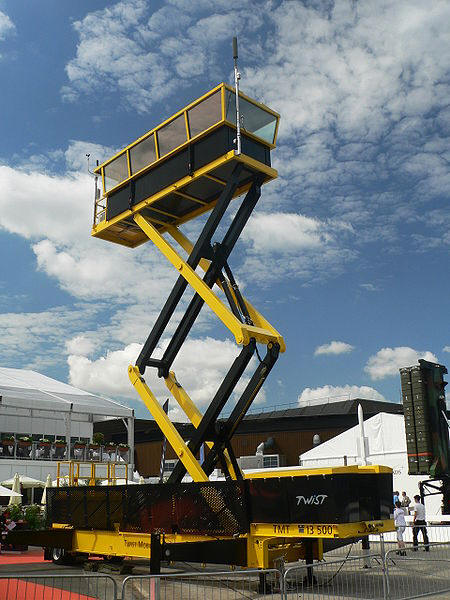
NEWSROOM
 |
NEWSROOM |
|
|
|
|
|||
|
By Mike Mitchell |
||||
 |
January 21, 2010 -
At the request of the Haitian government, the Department of
Transportation’s Federal Aviation Administration (FAA) dispatched a
portable, temporary control tower to
“This tower is a
visible representation of the Department’s contribution to our
government’s swift and considerable efforts to help
“We are all
grateful for the incredible effort put in by FAA employees who have
worked around the clock in The portable tower is 44 feet long, 13 feet high and eight feet wide, and weighs about 25,000 pounds. It comes with two diesel-powered generators and supporting fuel tanks, plus tools and other support equipment for installation and maintenance. The FAA uses this tower and others like it to support airports where existing towers are out of service after a disaster, like a major hurricane. Controllers providing terminal air traffic control services have worked outside at a folding table, using military radios to handle about 160 flights a day. The airport’s control tower was rendered unusable by the devastating earthquake on January 12. |
|||
|
Tower controllers provide
service to arriving and departing flights in the immediate area of the
airport and serve as ground controllers for movements on the airport
surface. Besides air traffic employees, the FAA has an airports division
team on the ground to inspect and evaluate the physical condition of the
runway as it handles a high volume of heavy military transport and cargo
aircraft.
Immediately
following the earthquake, the Department granted two exemptions from
current aviation restrictions, expanding the pool of available aircraft
by making them easier to charter. The first exemption helps streamline
the ability of the U.S. Government to procure charter air services on
short notice. The
second granted authority to a class of carriers that operate large
aircraft in private carriage, allowing them to evacuate persons from and
bring personnel and supplies to the disaster area.
Without this exemption, such conduct could violate the
Department’s economic licensing requirement for airlines.
In addition to the
FAA assistance, Federal Transit Administrator Peter Rogoff granted an
emergency petition to the principal public ferry service in Puerto Rico
to use the Federally-funded vessel the "Cayo Largo" to transport 65
rescuers, rescue vehicles, and medicine to the
Also over the past
week, the Department’s Maritime Administration (MARAD) mobilized six
ships to assist with relief efforts in |
| ©AvStop Online Magazine Contact Us Return To News |
|